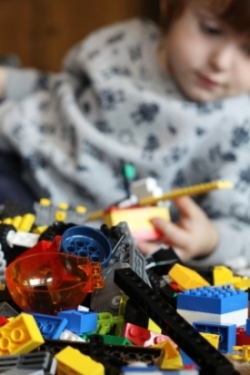Drum roll! Our 10 favorite blog posts of 2014
by Beth Finke
 It’s been another great year here at the Easter Seals blog, and to celebrate, the Easter Seals blog team and I are sharing links to our ten favorite posts from 2014. Those of you who missed them the first time around can read them now, and those of you who liked them when they were originally published can link to them again. Cheers!
It’s been another great year here at the Easter Seals blog, and to celebrate, the Easter Seals blog team and I are sharing links to our ten favorite posts from 2014. Those of you who missed them the first time around can read them now, and those of you who liked them when they were originally published can link to them again. Cheers!
- Our social media intern MacKenzie Olsberg taught video game newbies like me what it means to be a “non-playable character” (NPC) in her post about Taimi, a character in Guild Wars 2 who has a noncurable degenerative disease. To Mackenzie and many others, she was a groundbreaking character, especially since people with disabilities are not often seen in video games. This was easily the most viewed Easter Seals blog post of the year.
- Easter Seals President and CEO Jim Williams wrote a post applauding our partner CVS Caremark for making the bold move to stop selling tobacco products. And our readers applauded right along with us.
- After Easter Seals took the Massachusetts Thrive mentorship program online, we posted a letter that Thrive’s program coordinator Sandy Ho wrote to her younger self. This mentorship program and its support resources for young women with disabilities are now available nationally – visit easterseals.com/thrive.
- In November, we asked some of our staffers at Easter Seals Dixon Center, the military and veterans’ arm of Easter Seals, what Veterans Day means to them. Their answers made us proud, and we published them in a Veteran’s Day post.
- We also introduced a new blogger, our resident autism guru, Cathy Pratt, PhD. Her initial posts have been a hit and we’re excited to post more from her in 2015. Her latest post shares 16 ways to prepare your child with sensory issues for the holidays.
- Eileen Dombrowski’s post on Halloween costumes for kids with disabilities was a huge hit, as were the adorable pictures!
- Sara Heidenheimer, one of the veteran’s featured in our Veteran’s Day post, also wrote a Fourth of July guest post sharing her Fourth of July playlist – what fun!
- One of the many posts we published about intimacy during Valentine’s Day week was written by Katie Banister, a woman who lost feeling from her shoulders down as the result of an auto accident. The post was titled “But how?” and broke new ground for Easter Seals.
- In June 2014, Easter Seals headed to Capitol Hill to advocate for the Workforce Innovation and Opportunity Act, and Easter Seals’ Sara Croft wrote a great recap of our Washington, D.C., visit, which included meeting with Senator Tom Harkin.
- Our frequent blogger and public relations manager, Rachel Talen, left Easter Seals to become a teacher. Her post that explains why she chose this new path is touching and inspiring. (We miss you, Rachel!)
What’s in store for 2015? Sign up to follow the Easter Seals blog and find out. Happy new year!














